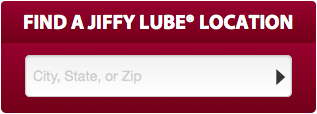Brake Inspection
Brake problems often start out little but can become increasingly bigger and more costly. Jiffy Lube® technicians can detect most brake problems big or small. They start by doing a brake inspection and carefully examining all major brake components: disks, brake pads and shoes and brake lines. After a thorough brake inspection, they can make brake repair suggestions based on wear and your vehicle manufacturer’s recommendations.
Brake Pad Inspection
When you step on the brake pedal, brake pads on each side of the disc or rotor apply pressure against it to slow your vehicle or bring it to a stop. During a brake inspection, pads will be measured by a Jiffy Lube® technician. Brake Service replacement is recommended based on the results of a complete brake inspection using vehicle manufacturer’s recommendations for disc pad/drum shoe minimum thickness and actual measurements.
Check the Disks
Disks or rotors are vital to slowing down and stopping your vehicle. When you press the brake pedal, pressure is applied to the disk by brake pads on each side. Each disk is inspected for rough spots, warping or damage. Disks should be shiny and show little signs of wear. Disks that are damaged or warped should be resurfaced or replaced immediately.
Examine Brake Lines
Brake lines can become corroded, cracked and stiff. Jiffy Lube® technicians check to see if the rubber lines are still pliable and soft so fluid can move without the risk of leaking. They also check the hard metal brake lines for corrosion and cracking. Replacing brake linings before they become damaged can save key system components and money. After the inspection, a written evaluation, with detailed diagnoses of findings, is provided and reviewed with you. Service recommendations are based on the vehicle manufacturer's recommendations and the existing condition of brake components that may impact system performance.
Please note: Not all Jiffy Lube® service centers offer all Brake Services. Please call ahead to ensure the service is available.
Find Your Jiffy Lube now
Signs or Symptoms Your Vehicle Needs a Brake Inspection:
- #1 - It’s been over a year or 12,000 miles since the last time your brakes were inspected
- #2 - You’re near or past the number of miles your vehicle’s manufacturer recommends between brake fluid exchanges
- #3 - The brake warning light on your dashboard comes on and stays on
- #4 - You hear grinding or squealing when you apply the brakes
- #5 - Your vehicle pulls to one side when you apply the brakes
- #6 - Your vehicle requires longer distances to stop than it used to
- #7 - The brake pedal responds slowly and feels "spongy"
- #8 - The brake pedal goes to the floor and/or requires excess pressure



